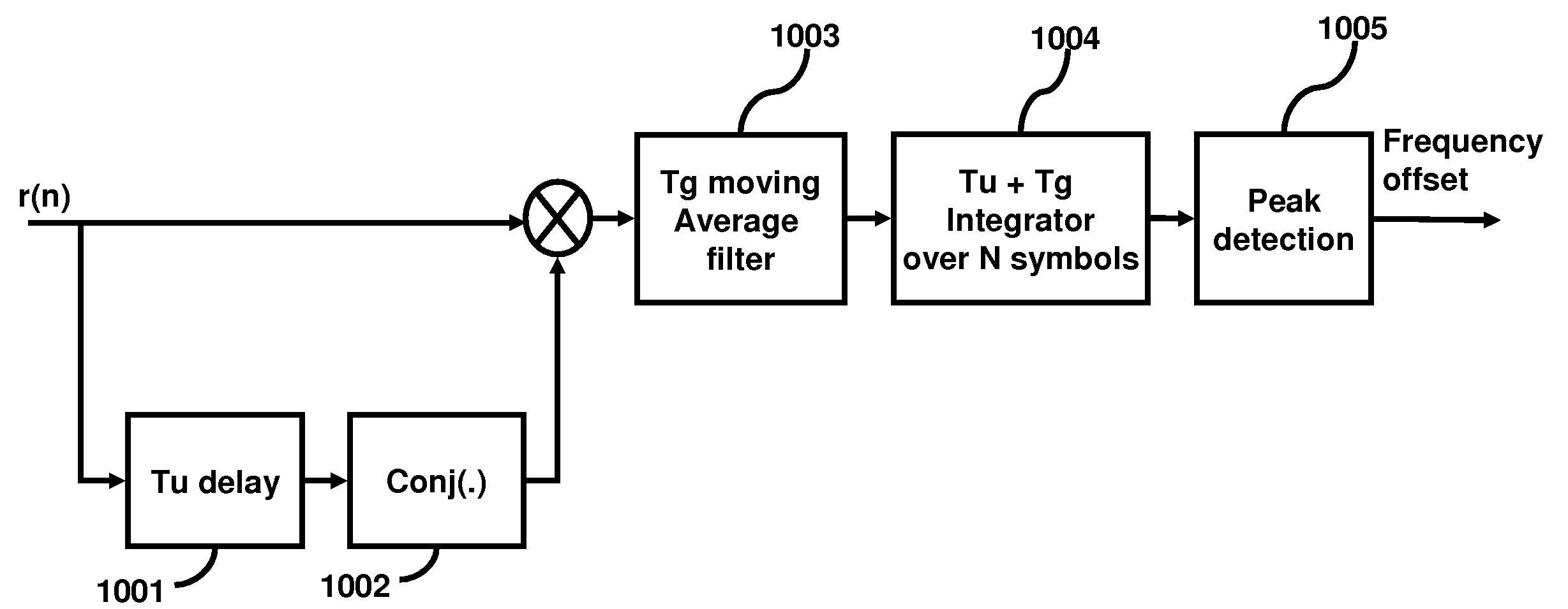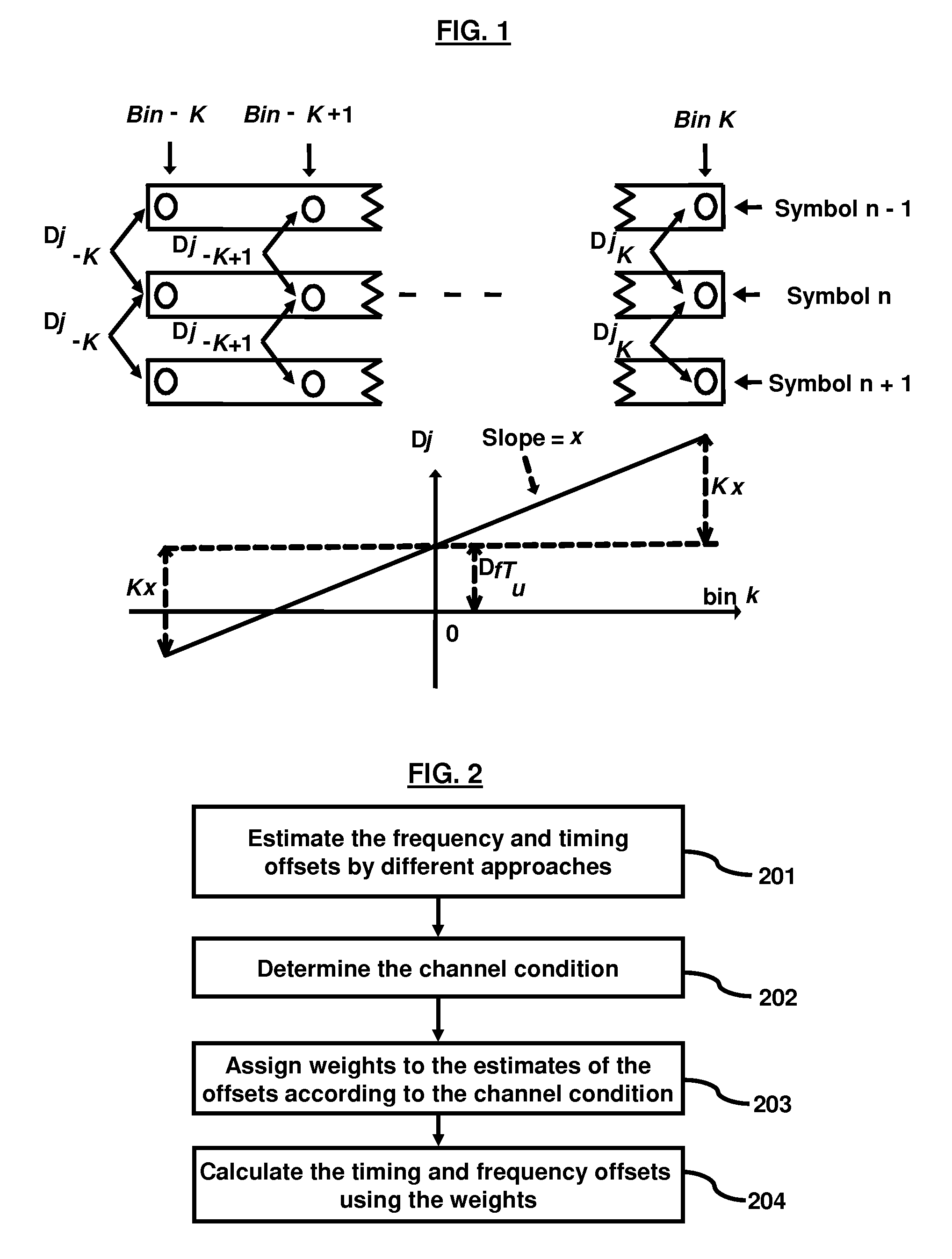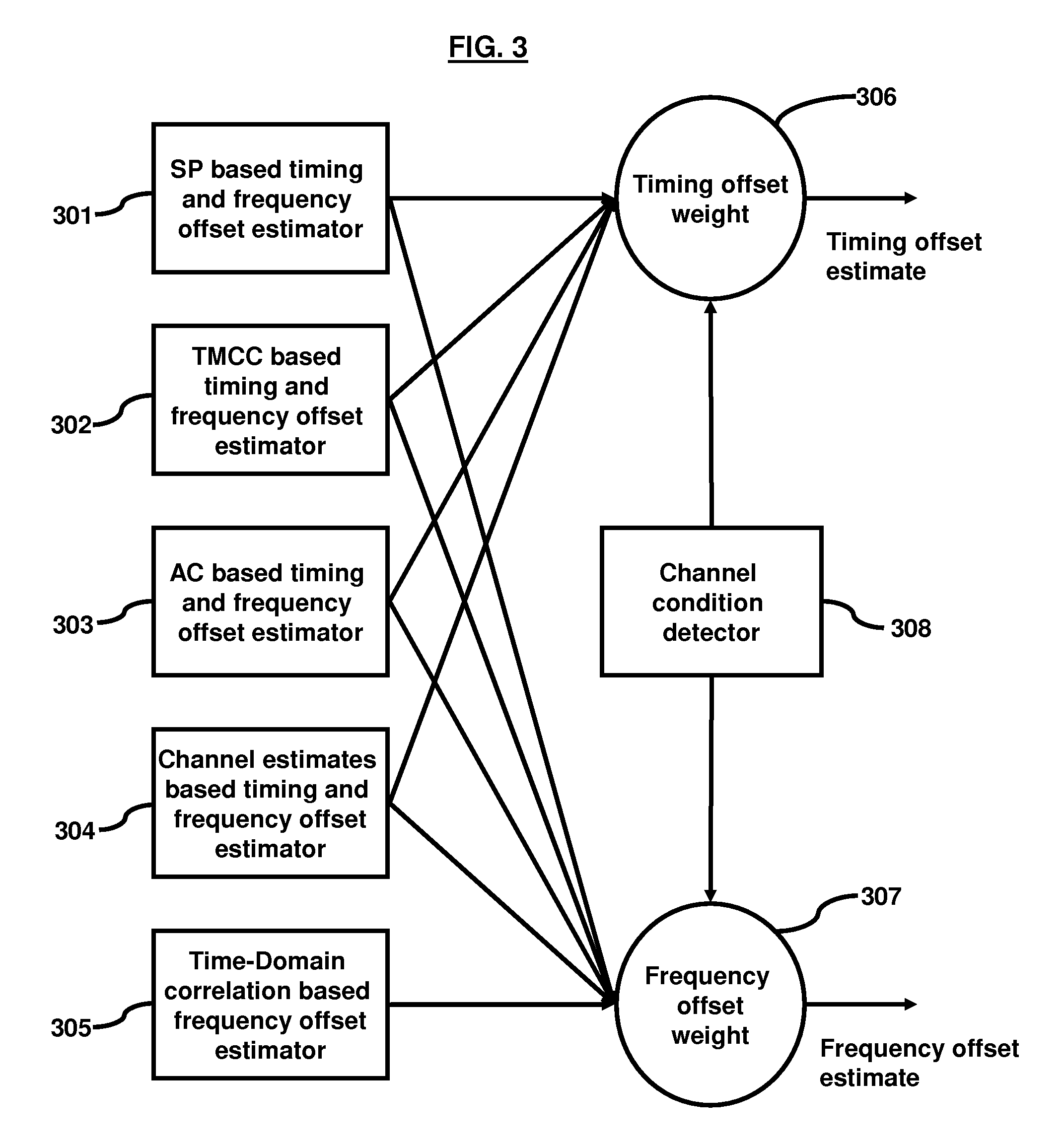Time and frequency domain based approaches for fine timing and frequency estimations in isdb-t and isdb-tsb receiver design
a time and frequency domain technology, applied in the field of communication systems, can solve the problems of large bit error rate and performance degradation, phase rotation of scatter pilots is generally not a good indicator of frequency and timing offset, and large bit error ra
- Summary
- Abstract
- Description
- Claims
- Application Information
AI Technical Summary
Benefits of technology
Problems solved by technology
Method used
Image
Examples
first embodiment
[0036]The estimator based on TMCC 302 uses phase rotation on TMCC sub-carriers to estimate frequency and timing offsets, wherein the TMCC sub-carriers are placed continuously in ISDB-T and ISDB-TSB channels. FIG. 6 shows how the phase difference of the TMCC bins is taken. FIG. 7, with reference to FIG. 3, is a flow diagram illustrating a method of frequency and timing offset herein. The phase difference of a TMCC bin over two adjacent symbols is approximated (701) as:
Δφk≈ΔfTu+ξk+Phtmcc (3)
where Phtmcc reflects TMCC data modulated on TMCC bins. After TMCC information is locked (702) for each symbol, the modulated TMCC data, Phtmcc is subtracted (703) from equation (3). TMCC information is preferably locked first to learn the information bit on the TMCC bins, so after subtracting modulated TMCC data, Phtmcc, the phase difference between two symbols reflects the channel phases. After removing the modulated TMCC data, Phtmcc from equation (3), the frequency offset is calculated (704)...
second embodiment
[0037]The offset estimator based on the AC 303 uses a phase rotation on AC sub-carriers to estimate frequency and timing offsets, wherein the AC sub-carriers are placed continuously in ISDB-T and ISDB-TSB channels. FIG. 8, with reference to FIG. 3, is a flow diagram illustrating a method of frequency and timing offset herein. The phase difference of an AC bin over two adjacent symbols is approximated (801) as:
Δφk≈ΔfTu+ξk+Phac (4)
where Phac reflects AC data modulated on AC bins. In ISDB-T and ISDB-TSB, Phac is either 0 radian or Π radians, which depends on the value of phase difference, Δφk. If (802) −Π / 2≦Δφkac is estimated (803) as 0 radian (Yes); else (No) Phac is estimated (804) as Π radians. Phac is subtracted (805) from equation (4) so that the phase difference, Δφk between two symbols reflects the channel phases. After removing the modulated AC data, Phac from equation (4), the mean and slope of the phase difference is calculated (806) and then the frequency and timing offse...
third embodiment
[0038]FIG. 9, with reference to FIG. 3, is a flow diagram illustrating a method of frequency and timing offset herein. The offset estimator based on the channel estimates 304 uses scatter pilots to interpolate channel estimates on each sub-carrier. The phase difference on the channel estimate on each sub-carrier over two adjacent symbols is calculated (901). The mean and slope of the phase difference is calculated (902). The mean of the phase difference indicates (903) the frequency offset and the slope of the phase difference is the timing offset.
PUM
 Login to View More
Login to View More Abstract
Description
Claims
Application Information
 Login to View More
Login to View More - R&D
- Intellectual Property
- Life Sciences
- Materials
- Tech Scout
- Unparalleled Data Quality
- Higher Quality Content
- 60% Fewer Hallucinations
Browse by: Latest US Patents, China's latest patents, Technical Efficacy Thesaurus, Application Domain, Technology Topic, Popular Technical Reports.
© 2025 PatSnap. All rights reserved.Legal|Privacy policy|Modern Slavery Act Transparency Statement|Sitemap|About US| Contact US: help@patsnap.com



